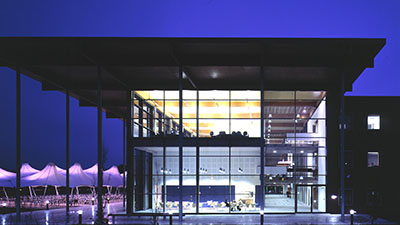Dynamical Grammars for Galaxy Image Recognition
Duration: 56 mins 7 secs
Share this media item:
Embed this media item:
Embed this media item:
About this item

| Description: | http://www.talks.cam.ac.uk/talk/index/23759 |
|---|
| Created: | 2010-06-09 10:17 |
|---|---|
| Collection: | Computer Laboratory Wednesday Seminars |
| Publisher: | University of Cambridge |
| Copyright: | Computer Laboratory |
| Language: | eng (English) |
| Abstract: | Data from sky images are large and growing. The Sloan Digital Sky Survey (SDSS) contains an estimated 1 million galaxy images. The Large Synoptic Survey Telescope (LSST) is being built and will scan the entire sky repeatedly, providing images of millions of galaxies and petabytes of data every night. The SuperNova Acceleration Probe (SNAP) is a proposed orbiting satellite that will repeatedly map the entire sky from oribit, providing images of perhaps billions of galaxies. Unfortunately, given an image of a spiral galaxy, there does not exist an automated vision algorithm to even tell us which direction the spiral arms wind, much less count them or provide any other quantitative information about them. To wit, the largest galaxy classification project is the Galaxy Zoo, in which thousands of human volunteers classify images by eye over the web. Although valuable, such human classifications will provide only limited objective quantitative measurements, and soon be overwhelmed with more data than humans can handle. However, such information would prove an invaluable source for astronomers and cosmologists to test current theories of galaxy formation and cosmic evolution (which can now be simulated with high accuracy on large computers, producing copious predictions that cannot be tested due to a lack of objective, quantitative observational data). In this talk, I will report on preliminary results from dynamical grammars and other machine learning and vision techniques to “parse” images of galaxies, starting us on the road towards producing quantitative data that will be useful for astronomers to test scientific theories. This work is in collaboration with Darren Davis, Eric Mjolsness, Aaron Barth, of UC Irvine. |
|---|---|
Available Formats
| Format | Quality | Bitrate | Size | |||
|---|---|---|---|---|---|---|
| WebM | 480x360 | 296.39 kbits/sec | 121.82 MB | View | Download | |
| Flash Video | 480x360 | 785.79 kbits/sec | 323.45 MB | View | Download | |
| Flash Video | 320x240 | 437.61 kbits/sec | 180.13 MB | View | Download | |
| iPod Video | 480x360 | 505.28 kbits/sec | 207.99 MB | View | Download | |
| MP3 | 44100 Hz | 125.02 kbits/sec | 51.25 MB | Listen | Download | |
| Auto * | (Allows browser to choose a format it supports) | |||||

